Exploring New York’s Industrial Past in "Cathedrals of Industry"
Join photographer Michael L. Horowitz for a journey through 50 years of photographs!


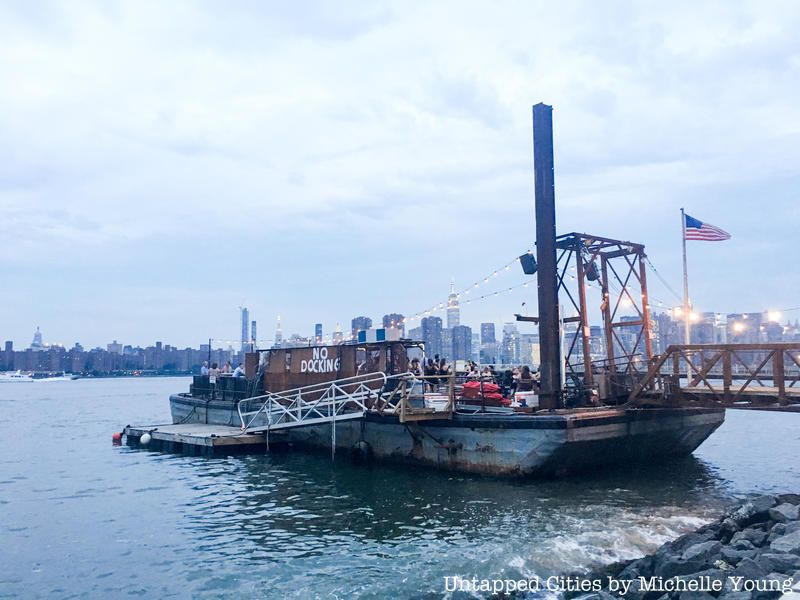
Greenpoint has evolved significantly since we first started publishing about the neighborhood, focusing then on the Polish meat markets and the re-appropriation of fallow industrial spaces into ones for light manufacturing. In the years since, a certain Williamsburg-like influence has crept northwards, for better or worse. The Greenpoint/Williamsburg area was ranked as the number one most rapidly gentrifying area by the NYU Furman Center in 2016, reporting a 78% percent increase in average rent from 1990 to the 2010-2014 study period. And new large-scale residential development is coming, particularly in the form of condos on the waterfront.
Still, long-time residents of Greenpoint still point to their favorite neighborhood haunts. This guide is produced with help from our friends, like Dylan Thuras, founder of Atlas Obscura, and Laura Itzkowitz, a travel writer and contributing editor to Untapped Cities. Itzkowitz tells us that she loves that “Greenpoint has very few chains, unlike Williamsburg. Though it’s getting more expensive and upscale, Greenpoint is still a neighborhood where independent entrepreneurs can thrive.” Still the new condos coming to the waterfront worry her, “because those kinds of developments tend to drive up rent prices in the neighborhood, which has a ripple effect on retail, restaurants, bars. I’m also not sure how the G train is going to be able to support a huge influx of new residents.”
Here are 21 resident-approved spots to discover in Greenpoint, across many categories:
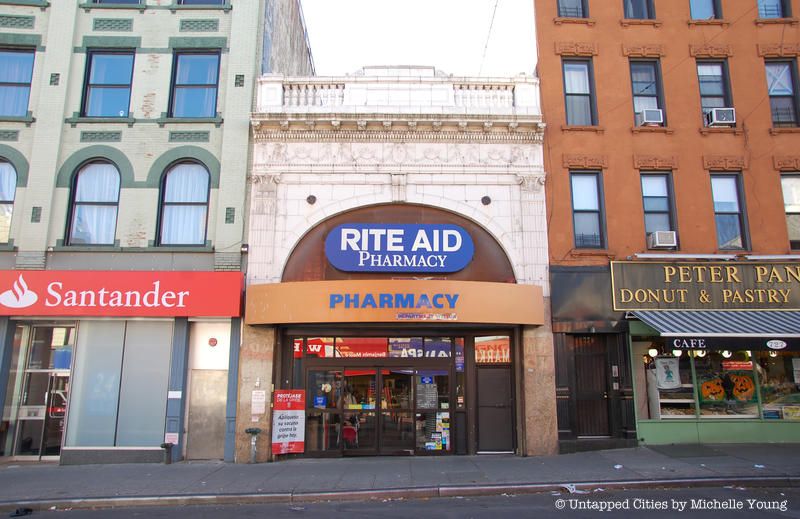
Along Manhattan Avenue, next to Peter Pan Donuts, there’s a stately building that houses of all things, a Rite Aid. Unlike your typical run-of-the-mill pharmacy, this particular Rite Aid is inside the body of a 1920s movie theater – the Meserole.
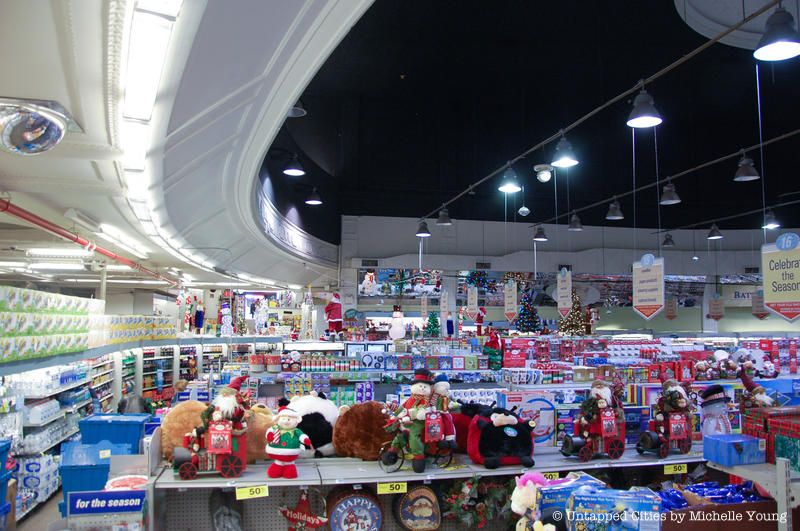
Besides the facade, the inside has more historical details to look for including an ornamented dome, the original ramps, columns, box seats and a balcony level. Where else might you find all of your household product needs displayed within an auditorium?
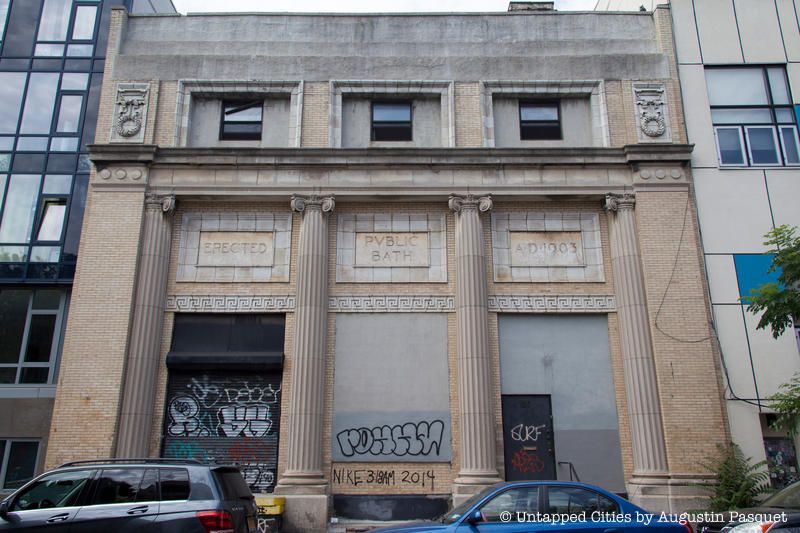
There were once twenty-five public baths in Brooklyn. The one on Huron Street was constructed in 1903 at a cost of $103,724. The June 1915 publication of the City Record, the official journal of the City of New York, noted that the valuation of the property at 139 Huron Street was at just $80,000, providing a clue as to the importance of architecture and design in the public baths – there was no expense spared.
The Beaux-Arts, neoclassical design was meant to evoke the style of Roman baths and the Roman lettering carved in the stone takes it a step further: PVBLIC BATH says the main sign, A.D. 1903 reads another. One thousand people came through here each day at the peak of activity.
The public bath closed in 1960 and the building was auctioned off. Today, most of the facade still remains although the cornice was removed and replaced with a simple slab of concrete. The second floor contains artist studios with rooftop patios. You can still imagine how the two sexes entered the building, through separate entrances in the front. Until a few years ago, the first floor was used as a manufacturing facility for a picture frame maker and much of the interior has been altered, but the facade still serves as a reminder of the City Beautiful movement here in New York.
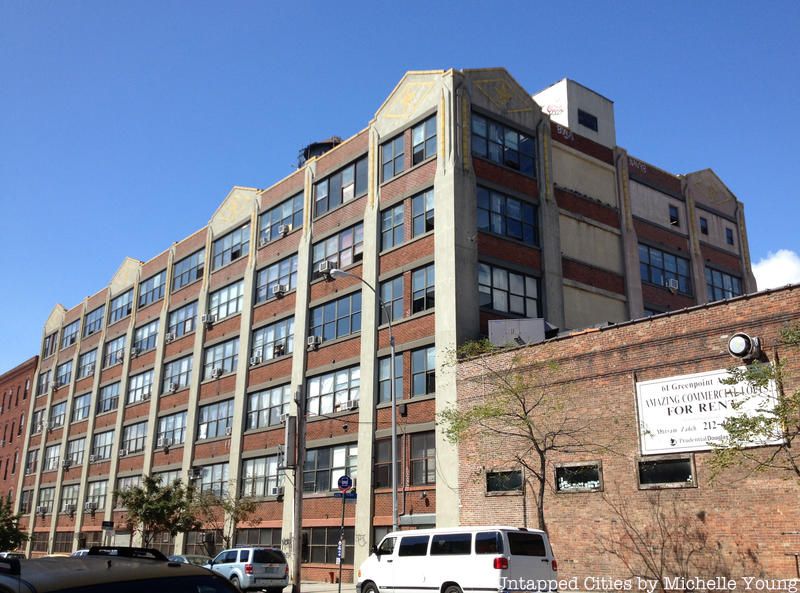
The Ebardhard Faber Pencil Company Historic District in Greenpoint, Brooklyn takes up a block, one of the city’s ten smallest historic districts. The historic district consists of 8 buildings and one free-standing wall that contains the facades of three, nearly demolished 19th century buildings.
Collectively, the buildings are examples of German Renaissance Revival architecture interpreted for American industrial buildings. Though all the buildings were at one point utilized and/or run by the Eberhard Faber company, the star of the buildings is of the 6-story building on Greenpoint Avenue with the yellow pencils visible on the decor near the top of the building. It was connected internally to the surrounding Eberhard buildings until the company sold the buildings in the 1950s.

A beloved neighborhood spot in Greenpoint just next to the fancy Rite Aid, Peter Pan Donut & Pastry Shop sells some of the best old fashioned donuts in the city. Around for decades, the shop feels like a true vintage lunch counter. Patrons crowd around the counter on stools eating classic cake donuts, glazed donuts, or egg and cheese sandwiches. Waitresses even wear 1950s style green and pink uniforms. And unlike many other donut and pastry shops, Peter Pan’s donuts are cheap, averaging $1.
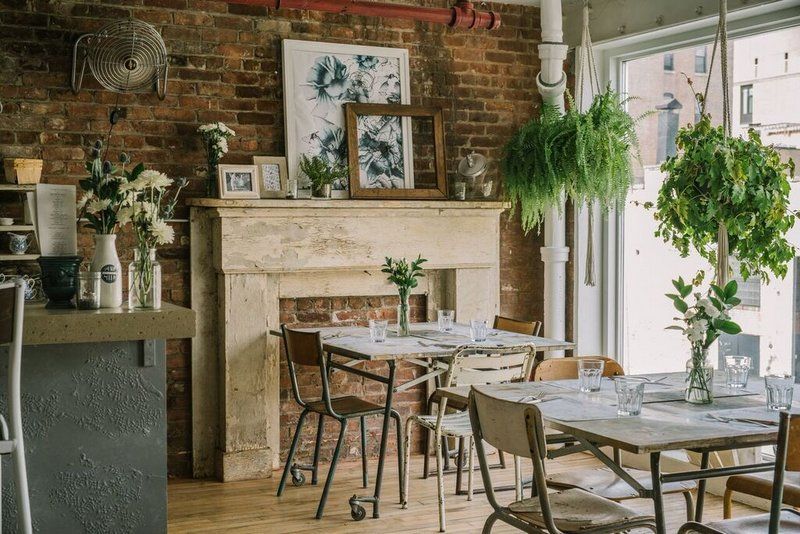 Photo courtesy Maman
Photo courtesy Maman
There’s something cozy about Maman, one of several locations in New York City and even Toronto. The recipes are family-inspired, a mix of French and North American. One of the founders was the head chef at a Michelin-starred restaurant in the south of France. Another partner is an event planner, and you can definitely tell. The decor is rustic chic, with the feel of a fabulous countryside wedding.
The upstairs space in Greenpoint, pictured above, opened in fall of 2016, a few months after the downstairs space.

Lot Radio is an independent radio station spinning out of a reclaimed shipping container in an empty lot just a short walk from McCarren Park. The music streams 24 hours a day online, where you can also see what’s happening inside the DJ booth and can be heard through speakers on the lot itself. The pebble-filled lot is surrounded by a fence, but is activated through a counter coffee kiosk on one end of the container, where you can buy drinks and pastries. Then, you can sit on the chairs and tables (or lounge in a hammock), in the lot.
The music is curated by many different DJs throughout the day, with each day’s schedule on the website. There have been open slots, where anybody can come and spin for an hour. The coffee stand supports the radio station’s operating costs. Founder Franćois Vaxelaire says, “I wanted to show that it’s still possible to do something alternative and independent in Brooklyn. Not everything is business.”
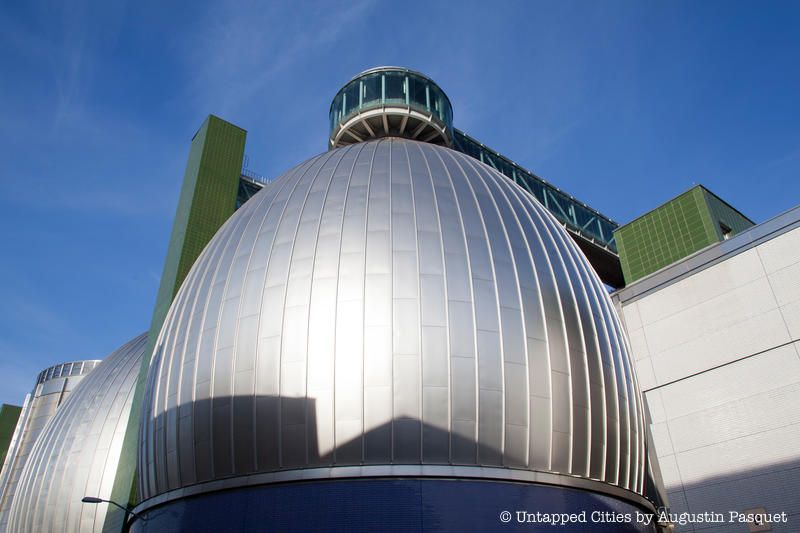
On special occasions, like Valentine’s Day and Halloween, the New York City Department of Sanitation hosts tours of the Newtown Creek Wastewater Treatment Plant, the largest of the city’s fourteen facilities. As unromantic or unfestive as a sewage treatment plant might sound, tickets for these free tours are snapped up so fast there’s often a long wait list. That’s because the Newtown Creek facility has become something of a city landmark. Eight 140-foot metallic silver digester eggs rise from the banks of Newtown Creek, an industrial zone at the border of Brooklyn and Queens. At night, the eggs glow with a deep blue color, part of an overall scheme by lighting designer Hervé Descottes.
This shiny facility, which opened in 2010, was designed by Polshek Partners, now Ennead Architects, the firm behind renovations at Carnegie Hall, Brooklyn Museum and American Museum of Natural History. The firm also designed the Standard Hotel in the Meatpacking District. The Newtown Creek project was a collaboration between the community, the architects and the New York City Department of Sanitation and is upheld as an example of collective planning at its best. As a testament, the New York City Arts Commission awarded the Newtown Creek Wastewater Treatment Plant with two honors for Excellence in Design.

Inside a set in Broadway States
On the area bordering Newtown Creek was once the former facilities of Standard Oil, John D. Rockefeller’s monopoly, which encompassed over 50 acres . The Sherman Antitrust Act forced the division of Standard Oil into sub-companies, which include 6 of the largest global oil companies today: like ExxonMobil, to name just one. Today, the land is occupied predominantly by warehouses, storage and industrial dry cleaning, but Exxon buildings and a BP Terminal remain.
A massive oil spill in 1979, with somewhere between 17 and 30 million gallons lost (not to mention the 110 million gallons of oil were lost in the 1919 fire alone), have made its mark on the terrain, above and below ground. When Broadway Stages, a film studio, opened up in this area, ExxonMobil sought to be a good neighbor during the land remediation process, installing lights and sidewalks. In 2010, the road was paved for the first time in 50 years. Broadway Stages is now one of the largest film production companies in New York City, with shows like Gotham, The Good Wife, Blue Bloods and Royal Pains filmed there.

The making of the world’s largest salmon lox bagel at Acme Smoked Fish.
If you want to get smoked fish directly from supplier, look no further than Acme Smoked Fish, which opens its doors on Gem Street every Friday morning from 8 AM to 1 PM. A large percentage of the smoked salmon, trout, herring and other fish New Yorkers (and shoppers around the country) buy at supermarkets comes from Acme, but heading to this factory will snag you wholesale prices. Acme has been around since 1906 and is still family run.
It’s also a no-frills, insider experience that true New Yorkers dig, with an entrance down a trucking bay.

In the late 1980s, local activists and tenants of the building met with the North Brooklyn Economic Development Corporation to organize a group to assume ownership of the manufacturing building at 1155 Manhattan Avenue, a complex built for the Chelsea Fiber Mills company, from the city. In 1992, city sold it to the newly formed Greenpoint Manufacturing Design Center for $1. The goal of GMDC would be two-fold: to include historic preservation of buildings and to keep rents affordable for industrial tenants. Never before had a model of a non-profit industrial developer existed to help protect space for small to medium sized manufacturers. As you walk through the naturally lit halls, activity explodes around you as manufacturers, designers and craftsman hustle and bustle about.
In partnership with the NYCEDC and other organizations, the GMDC has expanded beyond Brooklyn and rehabilitated its sixth building in 2009 (in Bushwick), with an additional building since then. Targeted for 2018 is its eighth project, the renovation of a former bicycle factory in Ozone Park, Queens.
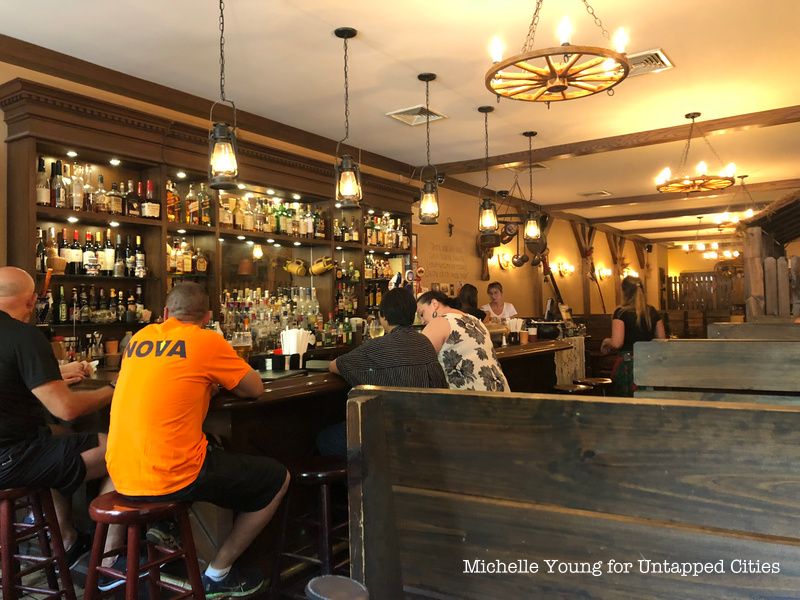
Among the many Polish meat markets and restaurants, Karczma stands out for its delicious and inexpensive Polish food. For $30, you could enjoy a feast large enough to feed a family of four for several days. Decorated like a traditional farmhouse with old Polish folk music and waitresses dressed in traditional garb, Karczma will make you feel like you traveled back in time to the Old Country. They have happy hour on Thursdays with Polish beer for $3.50. And if you can’t get enough of the kielbasa, stop by one of the many Polish meat markets on your way home. We recommend Sikorski.
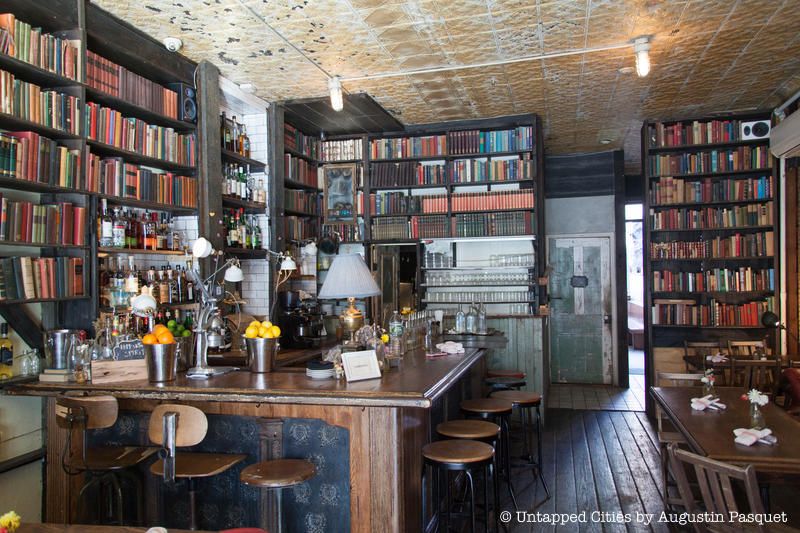
Relaxed and unpretentious, Milk & Roses is the perfect spot for an afternoon coffee, a glass of wine or a dinner. With a little garden in the back, it’s a sweet hideaway that you might never want to leave. The floor to ceiling bookshelves add to the cozy, romantic ambiance of this cute cafe, and the arrival of chef Matthieu Housse, a founder of We are the Oracle from Paris, has meant that cocktails here have been taken up to a whole new level. They also host book readings and live music. Don’t miss the backyard too.
Another notable spot is Cherry Point, which opened last year. The chef worked with April Bloomfield at the Spotted Pig so he has a whole charcuterie program. Writer Laura Itzkowitz says, “I love to go there and get a cheese board with some of their smoked fish. They even make their own saltine crackers and they’re seriously addictive!”
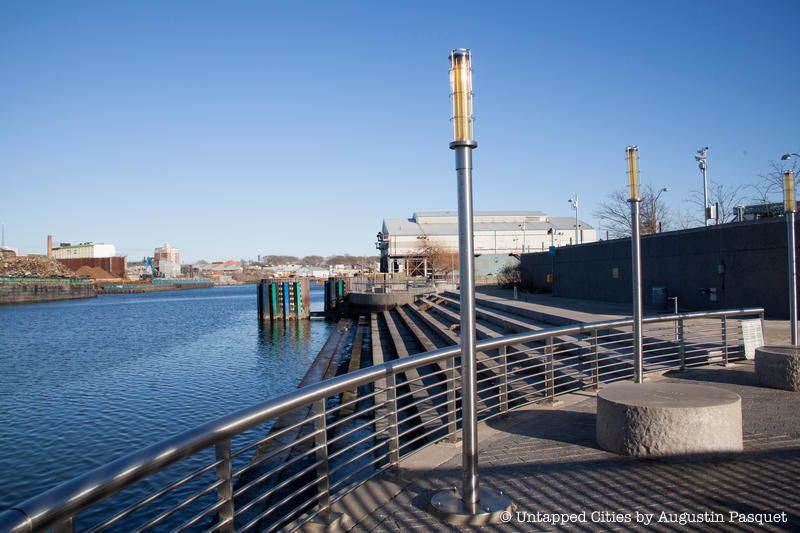
The industrial zone of Newtown Creek may be the last place you’d expect to find a nature walk, but that’s what makes the Newtown Creek Nature Walk so special. The quarter-mile walkway is architectural, designed by environmental sculpture artist George Trakas and planted with indigenous trees, plants, and flowers. One spot, pictured above, actually steps down into the creek itself, a bold move for a waterway not commonly associated with leisure.
The beginning of the walk can be a little tricky to find: Walk to the intersection of Provost Street and Paidge Avenue. Turn left on Provost Street, walking along the perimeter fence of the Newtown Creek Wastewater Treatment Plant.
Transmitter Park replaced the old WNYC radio transmission towers with a host of trendy urbanist amenities, such as a pedestrian bridge and esplanade, in addition to a children’s play fountain. The park also includes a pier that juts out into the East River, an open lawn, and a publicly accessible wetland area, all crammed into 1.6 acres. Definitely check it out for the unobstructed views of the Midtown Manhattan skyline – its still less populated than the overcrowded East River State Park in Williamsburg.
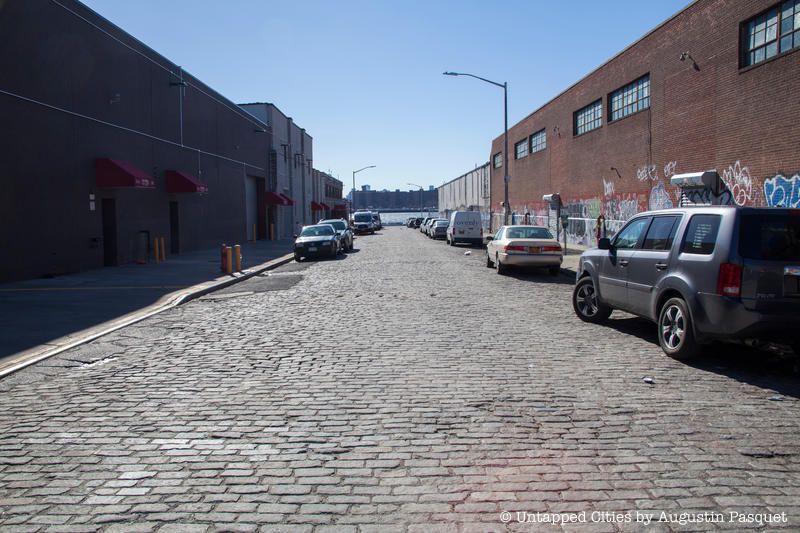
There are a few streets down by the Greenpoint waterfront where even the Google Street View car does not bother to venture. One of them is Java Street, where the road is still made of original Belgian blocks. Other streets have had their Belgian blocks either removed or paved over.
The environmental impact statement for Greenpoint Landing, the development just to the north of Java Street notes that “Worn paving along West Street also reveals the underlying Belgian block paving; Belgian block paving lines the entirety of Java Street as well.”
It’s no secret that Franklin Street is the neighborhood’s chic street. Brooklyn Paper declared it Brooklyn’s new hotspot back in 2007. The Wall Street Journal dedicated an article to the street in 2011. A year later, The New York Times declared it a fashion avenue. Nonetheless, the street’s mix of restaurants, bars, and boutiques continue to make it a draw. Close enough to the waterfront for that industrial chic and with new development along the way on the coast, Franklin Street’s “cool” reputation is likely here to stay.

The Brooklyn Barge will return this year for its third season at 3 Milton Street near WNYC Transmitter Park, giving patrons a choice of seating on land or on the water. The bar-on-a-boat is a popular idea in the city, but only the Brooklyn Barge offers customers this encompassing view of the midtown Manhattan skyline.
In previous years, Brooklyn Barge will also have great programming: free kayaking, paddle-boarding lessons, tours of historic boats like the tugboat Cornell and the Mystic Whaler, and partners like the Billion Oyster Project.
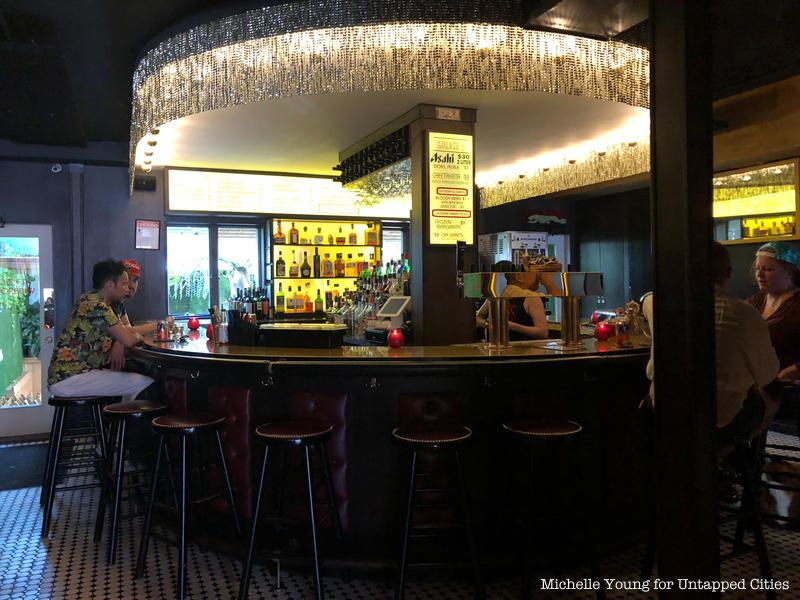
There’s an old school, disco-vibe charm to Goldie’s at 195 Nassau Avenue. The owners say the decor is inspired by an old casino. Sit at the horseshoe shaped bar, under glittery lighting or at some of the intimate nooks. There’s a full menu – custom cocktails, beer, wine and prosecco.
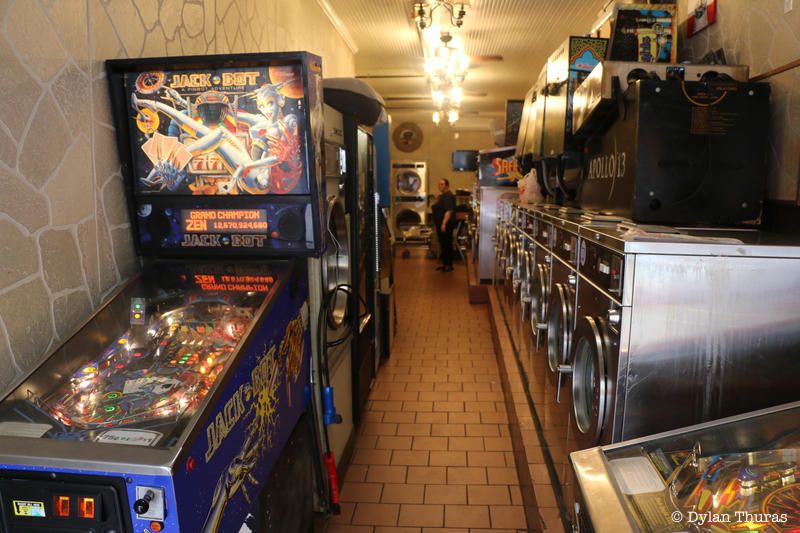
For a unique experience, Sunshine Laundromat has numerous pinball machines and they’ve recently renovated to have a speakeasy bar in the back. To get a sense of the owners’ humor, the door was once full of signs like, “Try our Gourmet Vegetarian Washing Machines and Vegan Dryers.” It’s only entrance is of course, a self-proclaimed “VIP Entrance.”
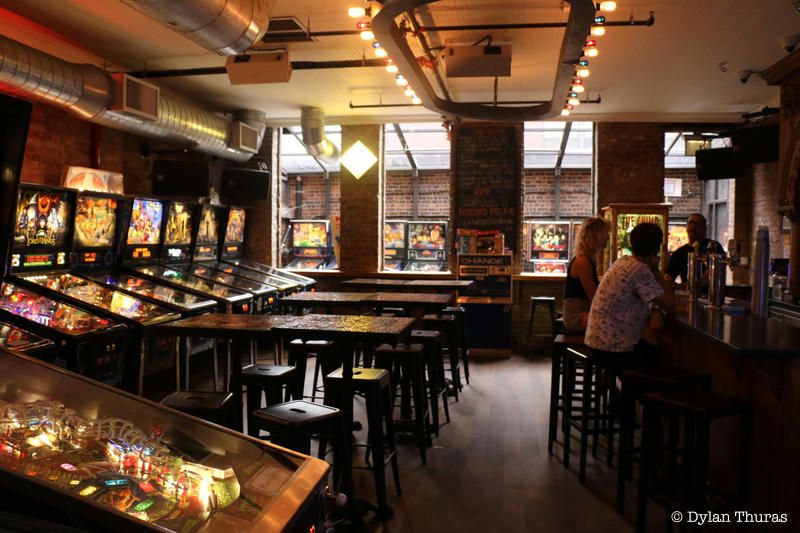
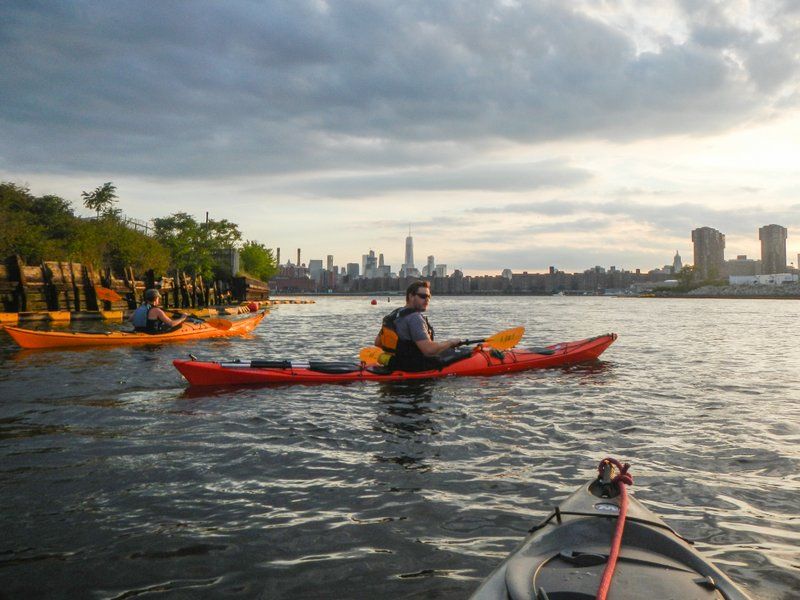
Photo courtesy North Brooklyn Boat Club
North Brooklyn Boat Club is a group dedicated to the advocacy for “human-powered boating” on the waterways around Greenpoint and Williamsburg. The club hosts fun events, including an overnight circumnavigation of Manhattan, a solstice party and film screenings. Broadway Studios, the film studio mentioned earlier in this guide, offers part of their space to the boat club.
Next, check out our archive of NYC Neighborhood Guides. See 15 Must Visit Spots in Crown Heights, Brooklyn.
Subscribe to our newsletter